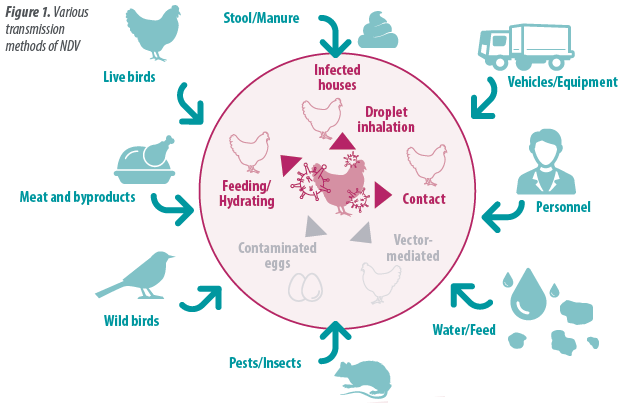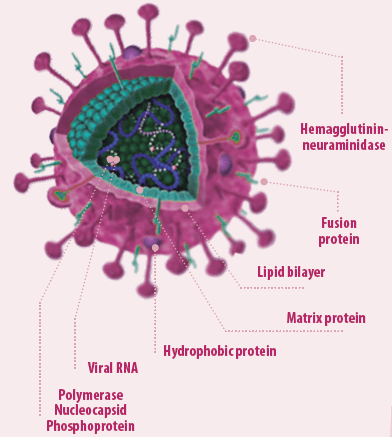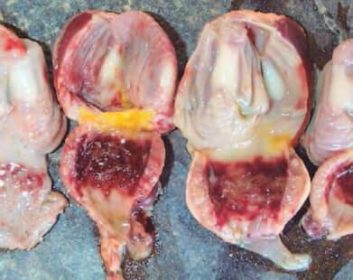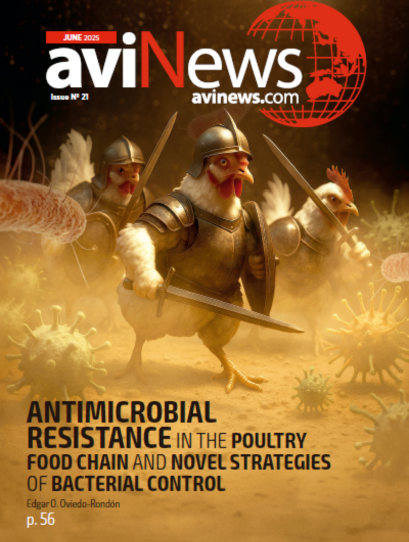Content available at: Español (Spanish) العربية (Arabic)
Together with Avian Influenza, Newcastle disease virus (NDV) represents one of the two most significant avian diseases. This is possibly due to their rapid spread globally and the high mortalities they cause.
Outbreaks are notifiable to the World Organization for Animal Health (OIE). They are also published in different media to prevent their spread to the poultry industries of other countries.
NDV is classified in the Paramyxoviridae family, genus Avulavirus. The viruses are classified into different groups according to their pathogenicity.

This causes a reduction in the productive parameters of the birds and an increase in the percentage of discarded birds in slaughterhouses.

Nervous signs like torticollis, and wing & leg paralysis may be seen in the final stages of the disease. Production is also significantly affected in adult birds. Deformed eggs with weak shells, pigmentless shells are common, as well as a general drop in lay. Mortality in young birds can reach 100%.
The incubation period varies from 3 to 8 days and the clinical consequences depend on factors such as:
- Virus type
- Viral load
- Vaccination plan and type of vaccines
- Immune status of birds

Macroscopic lesions are variable depending on the type of virus affecting the birds. In some cases the lesions may be similar to those of avian influenza. Therefore, definitive diagnosis requires the identification of the virus either by isolation or by molecular methods.

Differential diagnosis
Newcastle disease virus must be differentiated from avian influenza, as these virus cause similar clinical symptoms.

Photo 1. Hemorrhagic lesions in the proventriculus that can be caused by Newcastle virus or avian influenza
Current definition of Newcastle
The World Organization of Animal Health (formerly Office International des Epizootics -OIE) includes Newcastle disease and avian influenza in the A list. In other words, they are diseases with serious socioeconomic or public health consequences. These viruses have significant implications on the international trade of animals and their by-products.
OIE Commentary and Definition on Newcastle
The large variations in virulence and clinical signs of Newcastle disease viruses make it necessary to carefully define what constitutes Newcastle for purposes of international trade, control measures and policies.
NDV is defined as an infection of birds caused by an avian paramyxovirus serotype 1 virus (APMV-1) that meets one of the following virulence criteria:
Keep up to date with our newsletters
Receive the magazine for free in digital version
REGISTRATION
ACCESS
YOUR ACCOUNT
LOGIN
Lost your password?










